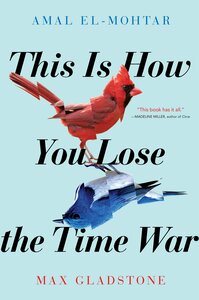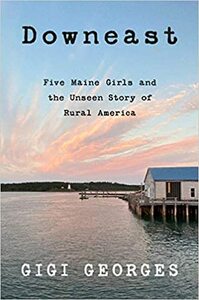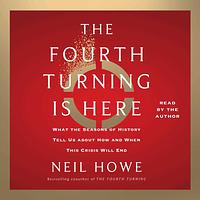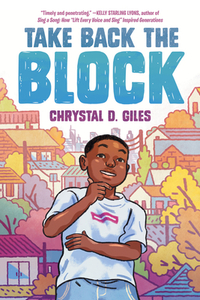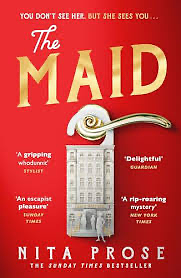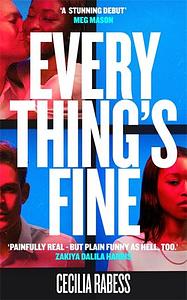Take a photo of a barcode or cover
reading_to_write's Reviews (207)
I don’t usually do subjective ratings on books, but this one warrants it because I think it’s that kind of book. Not everyone will like the writing style. There are few real plot points. Certainly isn’t rooted in space or time, and it takes a while to wrap your head around the two main characters. But I can see how some people will fall deeply in love with this book, its premise and the writing. Funny, almost like the authors planned it that way. Hmmmmm…..
Maybe I’ll like this book in another year or two or five.
Maybe I’ll like this book in another year or two or five.
Well researched and cleanly written, Georges tells the story of five young women maturing into adults with a close-personal viewpoint. The result is an easy-to-read chronological narration. Sometimes I wished for a little more depth to the words- for a more literary voice, which Georges has snippets of and which might have helped elevate this beyond a more simple anthropological approach, but I do understand the various reasons why the author made this choice. It is an important creative nonfiction sociological book, and a great read- glad Georges put what had to be a copious amount time into spending time with the subjects, conducting interviews and immersing herself locally. While she may be “from away” and wealthy and white, no one else from Downeast has yet emerged with a memoir or journalistic account of the area. Here’s hoping that, just as Hillbilly Elegy before it (which was not nearly as well researched or written as this), “Downeast” helps pave the way for Maine/ Downeast writers to gain contracts and more readers interested in the region, thus enabling them to publish corrective and much more literary nonfiction books that often follow
Rating is for the writing and content.
This is largely a redux of the previous book (The Fourth Turning), reissued for the newer generations who might be his new audience/ readers and updated with current events to prove why NOW is indeed the crisis/inflection point is this “saeculum.” He also goes into more details about what exactly the final crisis moment might look like, and what the ensuing “turnings” following it might look like, all with a generation-by-generation breakdown of how it may all generally feel and what role each cohort will play in each turning.
It is a lot of historical, sociological, and cultural Information delivered in an expert voice and using the Royal “we” since so much of it started as joint work with his original co-author. It’s dense, but quite readable. However, sometimes it seemed overly long and explanatory.
There is one content area that I noticed right off and that continued to distract me, and it was a fatal flaw in this book for me, as its introduction seemed to necessitate some additional explanation (at least) or (even better) additional theorizing. The author calls the turnings or recent historical past “Anglo-American”- as in “Anglo-American history” and “Anglo-American Crisis.” In one sense this acknowledges that his viewpoint (and theory) and therefore that of the book is predominantly white (and male… the majority of referenced historical figures, generational examples and quotes he pulls in are from white men of European origin). However, to not signal to the reader why he is doing this nor address the complexities that arise from it — if there is a Latino-American or African-American history and perspective that is different or follows a different timeline and what are the implications of that on his Anglo-American-centric theory and turning— is a failing of this author and this book.
He also made some alterations to the original theory that made it suspect, like the addition of two new inflection points (regeneracy) before entering the “Ekpyrosis” - a a new word pulled from the Greek. These additions along with language the author relied on in snort snippets at the end of some chapters gives the author a potential out should this fourth turning not unfold the way Howe foretells here.
It is a fine book. A good read to look at recent history in a different light, and it’s entertaining to posit the thesis.
The following has nothing to do with the rating:
One thing I’d caution readers to remember as they embark on this, especially those new to the Fourth Turning theories (which have, by the way, been co-opted by white supremacist hate groups as proof that there is a coming race war and to encourage other supremacists to take up arms and be prepared to fight for their hate-centered ideals): this IS just a theory and has not yet been proven. We have to wait for that. It’s entirely possible to find patterns in entirely separate things that are not, in fact, linked, and as humans we are hard-wired to do so (this tendency is called apophenia); and Howe even tells us that he looked for patterns in history, right there in the afterword:
“Thinking about history archetypically, as the product of overlapping generational scripts, is an acquired taste, like the habit of closely observing how people dress or talk. It starts with a glance here and a comparison there, and then it draws you in, until you can’t help but notice significant patterns in everything you see changing around you, from politics to pop culture.”
So this entire thing could be an illusory correlation.
But like I said, it’s fun to ponder and see historical events (and accompanying generational descriptions) in a different framework.
This is largely a redux of the previous book (The Fourth Turning), reissued for the newer generations who might be his new audience/ readers and updated with current events to prove why NOW is indeed the crisis/inflection point is this “saeculum.” He also goes into more details about what exactly the final crisis moment might look like, and what the ensuing “turnings” following it might look like, all with a generation-by-generation breakdown of how it may all generally feel and what role each cohort will play in each turning.
It is a lot of historical, sociological, and cultural Information delivered in an expert voice and using the Royal “we” since so much of it started as joint work with his original co-author. It’s dense, but quite readable. However, sometimes it seemed overly long and explanatory.
There is one content area that I noticed right off and that continued to distract me, and it was a fatal flaw in this book for me, as its introduction seemed to necessitate some additional explanation (at least) or (even better) additional theorizing. The author calls the turnings or recent historical past “Anglo-American”- as in “Anglo-American history” and “Anglo-American Crisis.” In one sense this acknowledges that his viewpoint (and theory) and therefore that of the book is predominantly white (and male… the majority of referenced historical figures, generational examples and quotes he pulls in are from white men of European origin). However, to not signal to the reader why he is doing this nor address the complexities that arise from it — if there is a Latino-American or African-American history and perspective that is different or follows a different timeline and what are the implications of that on his Anglo-American-centric theory and turning— is a failing of this author and this book.
He also made some alterations to the original theory that made it suspect, like the addition of two new inflection points (regeneracy) before entering the “Ekpyrosis” - a a new word pulled from the Greek. These additions along with language the author relied on in snort snippets at the end of some chapters gives the author a potential out should this fourth turning not unfold the way Howe foretells here.
It is a fine book. A good read to look at recent history in a different light, and it’s entertaining to posit the thesis.
The following has nothing to do with the rating:
One thing I’d caution readers to remember as they embark on this, especially those new to the Fourth Turning theories (which have, by the way, been co-opted by white supremacist hate groups as proof that there is a coming race war and to encourage other supremacists to take up arms and be prepared to fight for their hate-centered ideals): this IS just a theory and has not yet been proven. We have to wait for that. It’s entirely possible to find patterns in entirely separate things that are not, in fact, linked, and as humans we are hard-wired to do so (this tendency is called apophenia); and Howe even tells us that he looked for patterns in history, right there in the afterword:
“Thinking about history archetypically, as the product of overlapping generational scripts, is an acquired taste, like the habit of closely observing how people dress or talk. It starts with a glance here and a comparison there, and then it draws you in, until you can’t help but notice significant patterns in everything you see changing around you, from politics to pop culture.”
So this entire thing could be an illusory correlation.
But like I said, it’s fun to ponder and see historical events (and accompanying generational descriptions) in a different framework.
Review from the 11-year-old who read it: It’s a good book: I highly recommend it. It teaches you a lot about gentrification.
This is beautifully written, an intense exploration of both the writer’s life at a moment(s) of change and the lives of eight women writers through the ages while providing a host of societal / cultural insights. Best read slowly, to savor the writing.
Don’t believe the book-tok pans. This book is a journey, capturing the main characters’ awakening into herself at the exact time that the nation (or at least half of it) was awakening unto itself that it was not, in fact, post-racial, but that it was instead intrinsically formed by systemic racism. Author Cecilia Rabess uses Jess’ relationship with her white boyfriend and its development to reflect this reality, and she does so beautifully. Writing and material starts out light-hearted and (purposefully) somewhat trite but develops over the course of the book to take on depth and meaning beyond the stated subject matter of the book. And OMG, the ending!!! I won’t spoil it, but as someone who usually “sees the ending coming,” I couldn’t figure out where this one would land, and it kept me guessing right up to the last sentence.
Ultimately, the novel is a long, slow-boil commentary on nice white people racism, income inequality, our growing political divisiveness, and the opportunities that remain to bridge those divides.
And all you have to do to understand it is read it. It’s really a masterfully written novel in that sense, and Rabess should be lauded for what the book is really doing.
Ultimately, the novel is a long, slow-boil commentary on nice white people racism, income inequality, our growing political divisiveness, and the opportunities that remain to bridge those divides.
And all you have to do to understand it is read it. It’s really a masterfully written novel in that sense, and Rabess should be lauded for what the book is really doing.
It was OK. I missed that this was a YA novel, and Nate that partly explains the rating, though I’ve read plenty before as an adult that I’ve loved….
What worked for me: the foreboding that infuses much of the writing; the setting; some of the author’s prose. Some of the characters are surface level and come across as trite/stereotypical, but that’s also a bit what I would expect from something in this genre.
What did not work for me:
The ultimate killer was not a surprise, nor was the main character’s waffling on whether it was herself or not. The main character narrates this book with an omnipresent voice, which gave it an uneven feel and made parts of the internal dialogue confusing/ unbelievable. I realize that particular flaw can be explained as being part of the main character’s bipolar diagnosis (but that’s also too easy an excuse to pin it on).
Overall, an entertaining summer-end’s beach read, but not something I’d recommend.
What worked for me: the foreboding that infuses much of the writing; the setting; some of the author’s prose. Some of the characters are surface level and come across as trite/stereotypical, but that’s also a bit what I would expect from something in this genre.
What did not work for me:
The ultimate killer was not a surprise, nor was the main character’s waffling on whether it was herself or not. The main character narrates this book with an omnipresent voice, which gave it an uneven feel and made parts of the internal dialogue confusing/ unbelievable. I realize that particular flaw can be explained as being part of the main character’s bipolar diagnosis (but that’s also too easy an excuse to pin it on).
Overall, an entertaining summer-end’s beach read, but not something I’d recommend.
